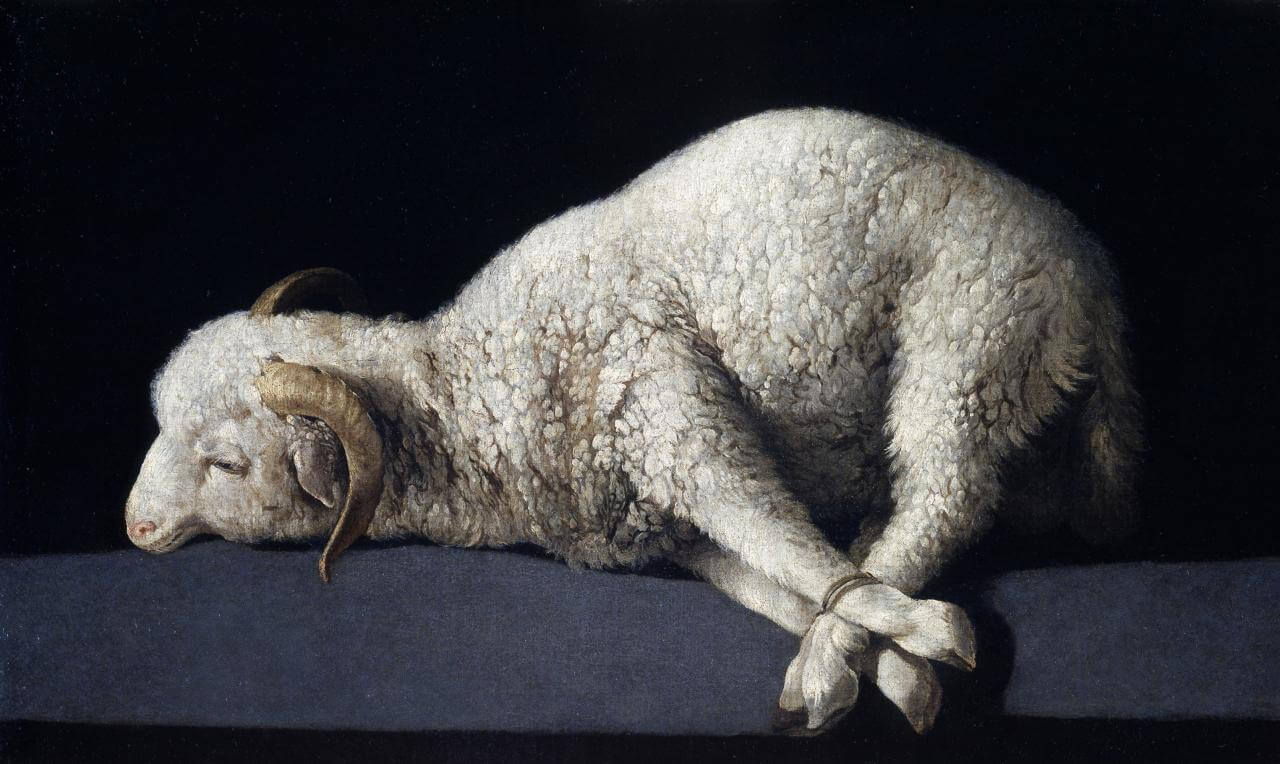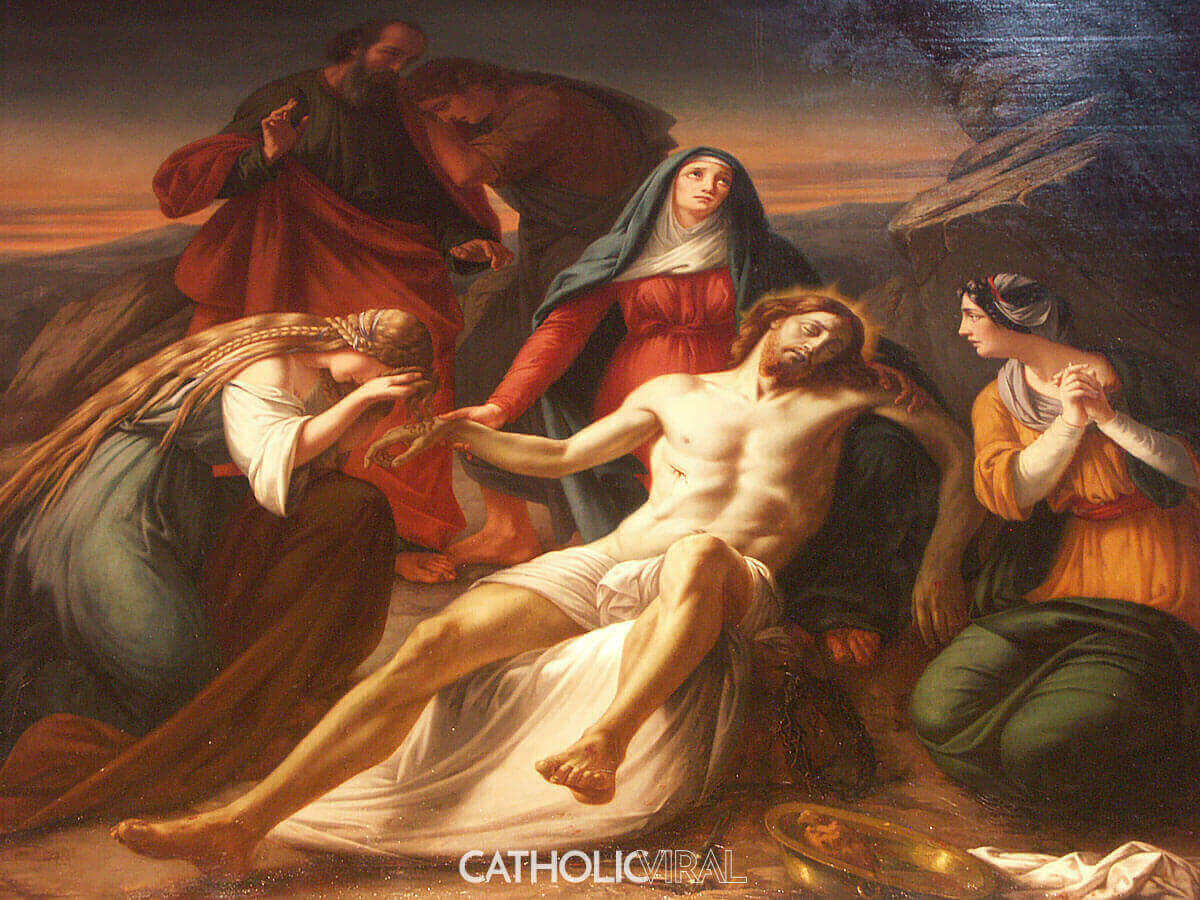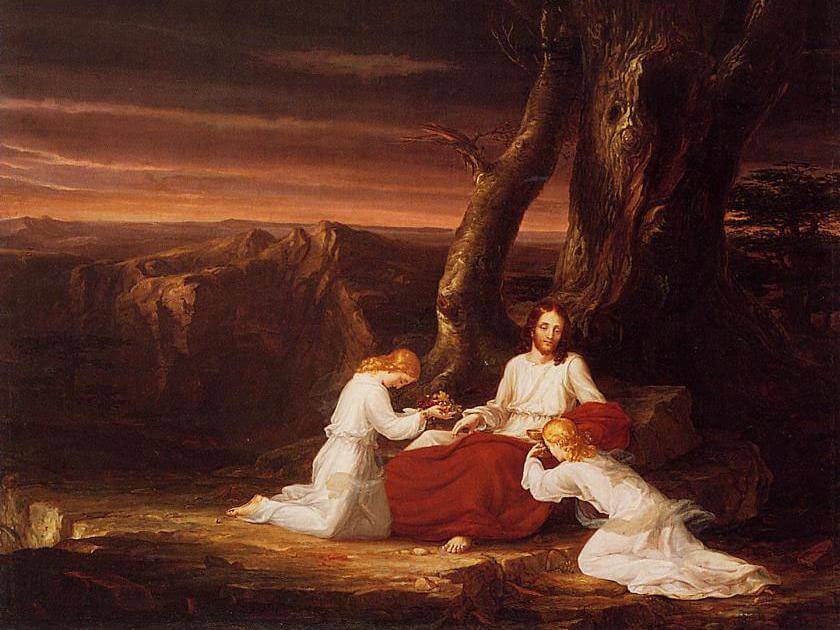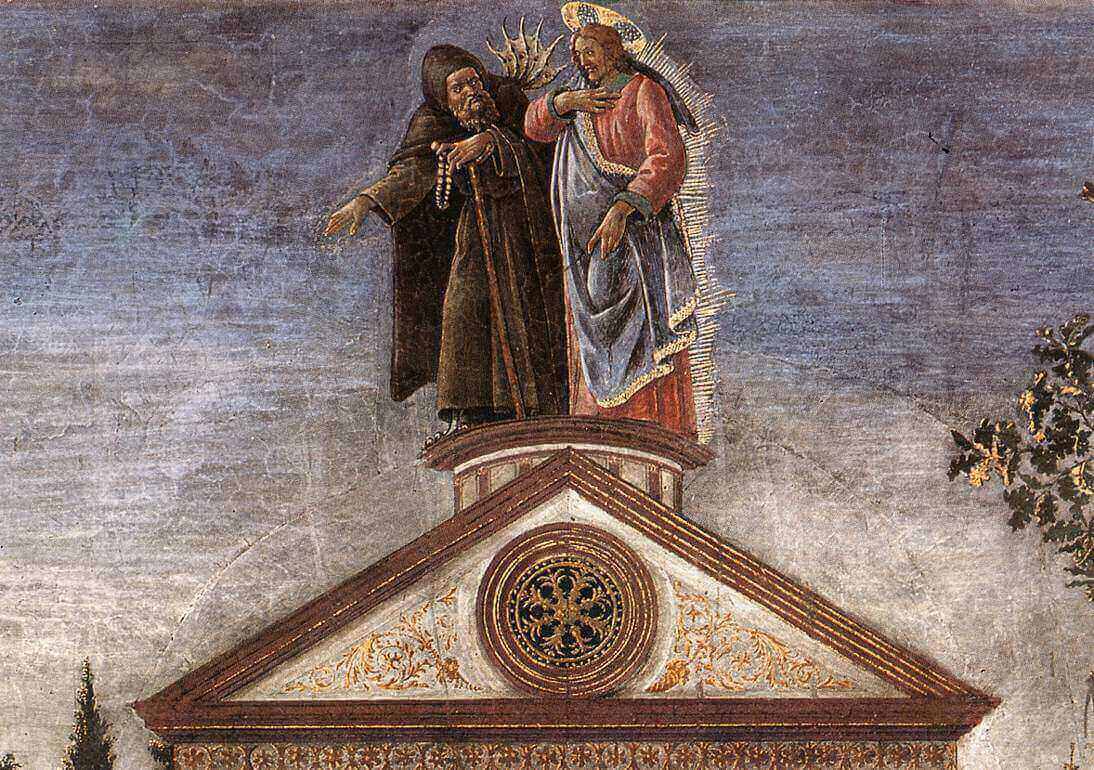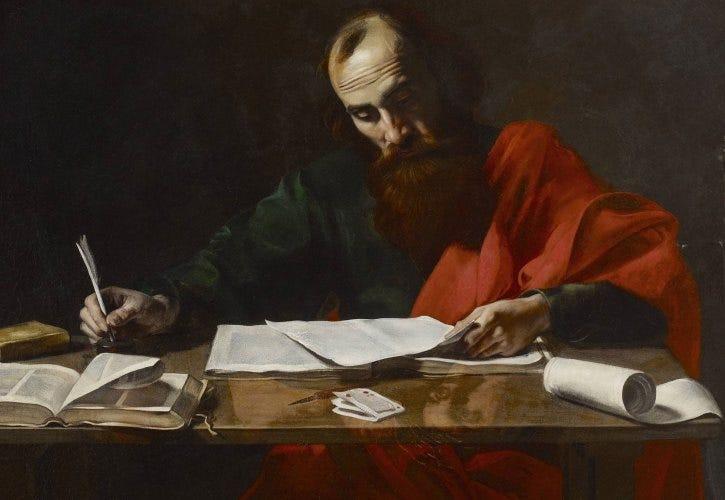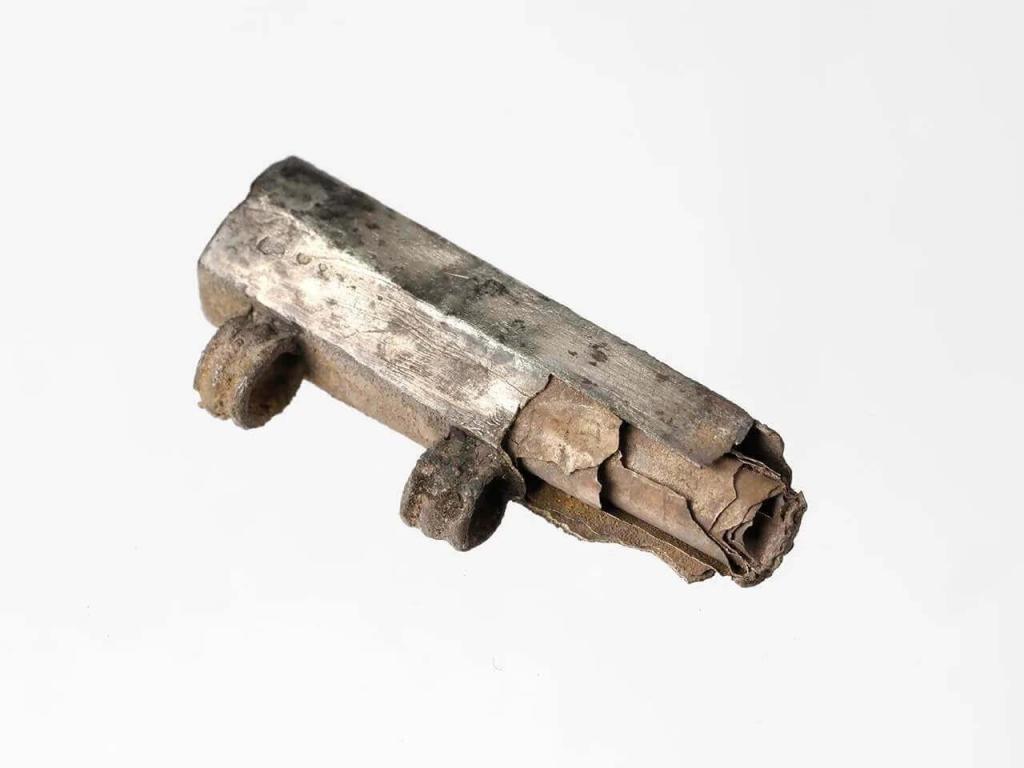Lent Day 29: Athanasius: Life of Anthony: Chaps. 81-94

Day Twenty-nine: St. Athanasius: Life of Anthony: Chaps. 81-94
Who: Bishop of Alexandria; Confessor and Doctor of the Church; born c. 296; died 2 May, 373 AD. He was the main defender of orthodoxy in the 4th-century battle against the Arianism heresy. Certain writers received the title “Doctor” on account of the great advantage their doctrine had on the whole Church, Athanasius especially for his doctrine on the incarnation.
What: The biography of Anthony the Great’s life, which helped to spread the concept of Christian monasticism, particularly in Western Europe.
Why: From the letter’s own prologue: “The life and conversation of our holy Father, Anthony: written and sent to the monks in foreign parts by our Father among the Saints, Athanasius, Bishop of Alexandria.” They wanted an accurate account of his life so they imitate his life and teaching.
When: Somewhere between 356 and 362 AD
You can find today’s reading on page 144 here: lentfatherscomplete.pdf
Here we are at the end of the Life of Anthony in the final chapters of Athanasius’ biography, and the final chapters of Anthony’s life at the grand old age of 105! By this point in his life he had become widely renowned and respected far and wide, so much that judges and rulers would come and seek his advice on things, or sought out encouragement in their faith. Many looked up to Anthony as a father figure, even the emperor Constantine Augustus, and his sons Constantius and Constans the Augusti, who “wrote letters to him, as to a father, and begged an answer from him” since they themselves had come to the faith. Despite rulers and kings writing to him and seeking his advice, Anthony thought nothing of it and didn’t allow himself to become puffed up with pride over the status of men.
After meeting and seeing the various people who would visit, Anthony would retreat to the “inner mountain” where he resided and spent much of his time in prayer. It was here that those who accompanied him would often see that Anthony was “wrapped in a vision” and would not speak or move.
Anthony foresees persecution
At one time while Anthony was working, he fell into a trance with loud groans and trembling. Those with him “trembling and terrified, desired to learn from him what it was” that he saw, and after a while, Anthony explained that persecution was coming upon the Church from the Arian heretics. Athanasius interjects here to say that two years after Anthony saw these things, the “plunder of the churches took place, when [the Arians] violently carried off the vessels” from the churches along with “the heathens” who they also conscripted to help them. But Anthony encouraged his brothers and told them that things would be put right and everything would be restored in the end, and to avoid the teaching of the Arians in the meantime, “for their teaching is not that of the Apostles, but that of demons and their father the devil”.
How Anthony was used by the Lord
Here it is stated that although many great signs and wonders were done through the hands of Anthony, he never let this go to his head and always pointed to Christ as the reason and source of all the wonders. He would often teach on faith from the words of Jesus; that if you have only faith the size of a mustard seed, you can move mountains and that nothing shall be impossible (Matt 17:20), and that if you ask the Father for anything in the name of Jesus, it shall be given (John 16:23), such as casting out demons, healing the sick and raising the dead (Matt 10:8).
He did this so that when he prayed for people, he “healed not by commanding, but by prayer and speaking the name of Christ. So that it was clear to all that it was not he himself who worked, but the Lord who showed mercy by his means and healed the sufferers”.
Persecutions from Arian sympathisers
At another point, a General Balacius came against the Christians who didn’t hold to the Arian view of Jesus (the doctrine which states that the Son had a beginning and wasn’t eternally with the Father always). He was so ruthless that he “beat virgins, and stripped and scourged monks”! Anthony took it upon himself to write to this man with a prophetic warning telling him to cease his persecutions, otherwise wrath would come on him very shortly since “it is on the point of coming upon” him already. He ignore the warning, and only eight days later, died from an unusual horse riding accident where one of his regular steeds, which was known to be a mild-mannered and temperate horse, suddenly bucked him off and bit through his leg which led to his death.
This served as a warning to all who were cruel or who may have planned to inflict punishment on the Christians, and many people sought out Anthony to hear him speak, or to receive prayer, with a lot of people turning from their worldly ways and dedicating themselves to the monastic life.
The death of Anthony
Anthony had learned “from Providence” (meaning either he learned it from God or just felt it was near because he was 105 years old), that his end was near and so he went out to see the monks in the “outer mountain” to bid them farewell and give them one last exhortation before he left them, “as though sailing from a foreign city to his own”. He encouraged them to remember all he taught them, to keep in the discipline and to “observe the traditions of the fathers, and chiefly the holy faith in our Lord Jesus Christ, which you have learned from the Scripture”. The monks “wept, and embraced, and kissed the old man” and he advised them on how to bury him, since the Egyptians liked to wrap their dead and display revered men in their homes as a display. Anthony instructed them that since Jesus was buried in the ground, that that was the only proper way to treat the dead; not to display them.
So he left for the inner mountain where he had his two companions promise to bury him secretly, and then he lay down and died with a smile upon his face, “as though he saw friends coming to him and was glad because of them”.
Athanasius closes his record of Anthony’s life by praising the type of life he lived and how he lived it purely for God from his youth.
This is the end of Anthony's life in the body and the above was the beginning of the discipline. Even if this account is small compared with his merit, still from this reflect how great Anthony, the man of God, was. […] Read these words, therefore, to the rest of the brethren that they may learn what the life of monks ought to be; and may believe that our Lord and Saviour Jesus Christ glorifies those who glorify Him. … Amen
I feel like I'm parting ways with an old friend after reading about St Anthony in so much detail over these last few days, his life story has definitely had an impact on me and given me things to consider and areas I want to be more disciplined in.
Leave a comment Like Back to Top Seen 284 times Liked 0 times
Enjoying this? Consider contributing regular gifts for this content on Patreon.
* Patreon is a way to join your favorite creator's community and pay them for making the stuff you love. You can simply pay a few pounds per month or per post that a creator makes, and in return receive some perks!
Subscribe to Updates
If you enjoyed this, why not subscribe to free email updates and join over 792 subscribers today!
My new book is out now! Order today wherever you get books
Recent Posts
Luke J. Wilson | 3 days ago | Christmas
As the Church celebrates Epiphany, we reflect on the Magi's visit to the Christ child, guided by a star—a sign of God’s revelation to the nations. This story, steeped in wonder and mystery, has sparked fascination for centuries. What was this “Star of Bethlehem” that led the wise men to Jesus? Was it a miraculous light, or could it have been a natural astronomical event designed by the Creator to herald the birth of the King of Kings? The chart is from the SkySafari app The Great Conjunction In December 2020, the world witnessed a rare astronomical event called a “great conjunction.” Jupiter and Saturn appeared so close in the night sky that they seemed to merge into a single brilliant light. Such conjunctions are infrequent, occurring roughly every 20 years, but the alignment of 2020 was the closest in nearly 800 years. These celestial phenomena prompt awe and wonder, reminding us of Psalm 19:1: “The heavens declare the glory of God.” They also offer an opportunity to consider how the natural world might point us to the divine. Could a similar conjunction have been the famed “Star of Bethlehem”? Saturn and Jupiter appear to close in on each other as the Great Conjunction 2020 approaches on 21 December (apparent distance given in degrees and arcminutes). Credit: Pete Lawrence Astronomy and the Magi The Magi, often referred to as “wise men from the East,” were likely Persian astrologers skilled in interpreting the stars. Around 7 BC, a triple conjunction of Jupiter and Saturn occurred in the constellation Pisces. To the Magi, this alignment carried profound symbolism. Jupiter, the planet of kingship, coronations, and the birth of kings. In Hebrew, Jupiter was known as Sedeq or “Righteousness,” a term also used for the Messiah. Saturn, associated with divine protection Pisces, later linked to the birth of Jesus as the “fisher of men” In September of 3 B.C., Jupiter came into conjunction with Regulus, the star of kingship, the brightest star in the constellation of Leo. Leo was the constellation of kings and was associated with the Lion of Judah. Together, these signs might have suggested the birth of a royal figure in Israel. Compelled by this celestial message, the Magi embarked on their long journey, seeking the child born to be King. Following the Star The journey of the Magi culminates in Bethlehem, where the star appears to “stop” over the place where the child was. This detail aligns with the phenomenon of retrograde motion, where planets appear stationary in the night sky due to their orbits. Could Jupiter have been this “star,” guiding the Magi at just the right moment? In December, 2 BC, the Magi arrived and visited Jesus in Bethlehem. At this point, Jesus may have been about a year or two old — toddler age. The verse in Matthew 1:11 suggests Jesus was no longer a baby at this point based on the Greek word used: παιδίον (paidion) meaning a young child. Jupiter was then right above Bethlehem when viewed from Jerusalem due to its paused retrograde motion, which lasted for about six days, which aligns with the Biblical text: Matthew 2:9 When they had heard the king, they set out; and there, ahead of them, went the star that they had seen at its rising, until it stopped over the place where the child was. A Sign of Revelation Epiphany invites us to marvel not only at the star but at the God who uses creation to reveal His glory. Whether the Star of Bethlehem was a miraculous light or an astronomical event, it points to Jesus, the true Light of the World. In Jesus, God’s love is made manifest — not just to Israel but to all nations. The Magi’s journey reminds us of our own pilgrimage of faith. Like them, we are invited to seek Christ, to bow in worship, and to offer Him our treasures: our hearts, our lives, our devotion, as “living sacrifices” (Rom 12:1). Jesus, the True Star As we celebrate Epiphany, let us remember th...
Luke J. Wilson | 3 days ago | Archaeology
The discovery of an 1,800-year-old silver amulet in Frankfurt, Germany, has captured the attention of archaeologists and theologians alike. Known as the “Frankfurt Silver Inscription,” this artefact is the earliest known evidence of Christianity north of the Alps and serves as a great insight to early Christian theology and liturgical practice. Its early date (230–270 AD) sets it apart from previously known artefacts, which are at least 50 years younger. While there are historical references to Christian communities in Gaul and Upper Germania during the late 2nd century, reliable material evidence of Christian life in the northern Alpine regions generally only dates to the 4th century. This amulet offers new insights into the life and faith of early believers, revealing their theology, liturgical practices, and adaptation of existing traditions. 1. Invoking St. Titus: A Connection to Apostolic Roots One of the most remarkable features of the inscription is its invocation of St. Titus, a disciple and confidant of the Apostle Paul. This early reference highlights the theological importance of Apostolic authority and continuity. Titus, known for his leadership within the early church, symbolises the rootedness of Christian faith in the teachings and mission of the Apostles. In this context, the invocation of a saint also invites a deeper exploration of the “cult of saints,” a term scholars use to describe the veneration of saints within Christian tradition. The cult of saints became a significant aspect of Christian worship in the 4th and 5th centuries, with practices such as the commemoration of martyrs, the dedication of churches to saints, and the belief in their intercessory power. The earliest documented evidence of this practice, including the veneration of relics and the dedication of feast days, often centres on martyrs who bore witness to their faith during times of persecution. However, the invocation of St. Titus in the “Frankfurt Silver Inscription” predates these later developments by over a century, suggesting that the practice of seeking the intercession or spiritual protection of saints may have roots earlier than traditionally believed. This discovery contrasts with historical accounts that identify the late 3rd and early 4th centuries as the period when such practices began to gain prominence within the wider Christian community. As such, the amulet not only sheds light on early Christian devotion but also challenges prevailing assumptions about the origins and development of saintly veneration. Icon of Saint Titus 2. The Trisagion: Early Liturgical Development The phrase “Holy, holy, holy!” — known as the Trisagion — appears prominently in the inscription, marking one of the earliest recorded uses of this liturgical formulation in a Christian context. Though widely recognised in the 4th century, its presence here challenges traditional assumptions about the timeline of liturgical development. This suggests that elements of Christian worship, likely adapted from Jewish practices, were formalised earlier than previously thought. 3. Paul’s Christ Hymn: Scripture as the Foundation of Worship The inscription includes an almost verbatim quotation from Philippians 2:10–11: “At the name of Jesus every knee should bend, in heaven and on earth and under the earth, and every tongue should confess that Jesus Christ is Lord.” This demonstrates the early integration of Pauline theology into Christian liturgy and devotion. The explicit use of Holy Scripture highlights the centrality of Christ’s lordship in early Christian belief, even before the formal canonisation of the New Testament. 4. A Sacred Object for Protection and Proclamation The amulet, containing sacred text, was likely carried as a personal object of devotion and spiritual protection. Such items underscore the blend of Christian faith with ancient traditions of carrying protective talismans. This use of...
Luke J. Wilson | 23rd December 2024 | Christmas
The Christmas tree is one of the most recognisable symbols of the festive season, adorning homes, churches, and public spaces with its evergreen beauty. But where did this tradition originate, and how did it become a central feature of Christmas celebrations? Looking into the history of the Christmas tree has turned out to be a fascinating historical story woven from various cultural and theological strands. The Paradise Tree and the Feast of Adam and Eve The connection between the Christmas tree and the Feast of Adam and Eve offers a large clue into its origins. In medieval Europe, December 24th was observed as the feast day of Adam and Eve, a commemoration tied to their expulsion from Eden. One of the most notable elements of this feast was the “Paradise Tree,” used in mystery plays and home displays to symbolise the Tree of Knowledge in the Garden of Eden. These trees, typically evergreen, were decorated with apples to represent the forbidden fruit and wafers symbolising the Eucharist. This imagery reflected both humanity’s fall into sin and God’s redemptive plan through Christ. The Paradise Tree served as a visual catechism of sorts, teaching the story of salvation from the Fall to the Redemption. In a later tradition the wafers were replaced by cookies of various shapes, and candles, symbolic of Jesus as the light of the world, were often added to the trees. Pre-Christian Traditions and the Evergreen Evergreens have long been associated with life and resilience in the darkest days of winter. In pre-Christian European traditions, evergreen boughs were used during festivals like the Roman Saturnalia and the Germanic Yule. These practices celebrated the endurance of life through the cold and darkness, offering hope of the spring to come. While these customs were not inherently Christian, they provided a cultural framework that could be adapted to Christian theology. The evergreen tree, in this context, became a symbol of eternal life in Christ, as suggested by John 10:28: “I give them eternal life, and they will never perish.” Martin Luther and the Candlelit Tree A significant figure in the history of the Christmas tree is the Reformer Martin Luther. According to tradition, Luther was struck by the beauty of a starry winter sky shining through the branches of an evergreen tree. To share this moment of wonder with his family, he brought a tree into his home and decorated it with candles to represent Christ as the “Light of the World” (John 8:12). While this story is likely apocryphal, it reflects the theological connection Christians saw in the evergreen tree as a symbol of Christ’s enduring presence and light in the darkness. Luther’s influence in Protestant Germany may have helped popularise the use of Christmas trees in Christian households. The Spread of the Christmas Tree The tradition of the Christmas tree gained popularity in Germany during the 16th and 17th centuries. By the 18th and 19th centuries, German immigrants brought the custom to other parts of Europe and North America. One pivotal moment in its wider adoption was the depiction of Queen Victoria and Prince Albert around a decorated Christmas tree in an illustration published in the Illustrated London News in 1848. This royal endorsement sparked a surge in the tradition’s popularity, particularly in Britain, where it came to symbolise the domestic warmth and joy of the holiday season. Prince Albert, Queen Victoria, and the British royal family gathered around the Christmas tree at Windsor Castle, from the Illustrated London News, 1848. Source: Britannica St. Boniface and the Sacred Oak One of the most compelling narratives about the Christmas tree’s origins involves St. Boniface, an English missionary whose evangelistic efforts in 8th-century Germany played a pivotal role in shaping this enduring custom. According to tradition, Boniface encountered a group of pagans venerating an oak tree dedicated to Thor, the Norse ...
Luke J. Wilson | 18th December 2024 | Archaeology
New discovery proclaims Jesus as “Son of God” a century earlier than previously thought. An exciting archaeological discovery has recently come to light: researchers have unearthed an 1800-year-old silver amulet in Frankfurt, Germany. This amulet provides the earliest known evidence of Christianity north of the Alps and disrupts previously held ideas about the spread of the faith, namely that Christianity didn’t get to the German region around the fourth century. The amulet, dating from approximately 230 to 270 AD, was found in 2018 beneath the chin of a man’s skeleton during excavations at a Roman burial site near the former town of Nida, now part of Frankfurt’s northwestern suburbs. 3rd-century burial with silver amulet at the neck. Credit: Michael Obst, Monument Office of the City of Frankfurt am Main Inside the amulet was a delicate silver scroll, measuring about 91 millimetres in length, inscribed with an 18-line Latin text. Due to the fragility of the foil, researchers employed advanced imaging techniques, including computed tomography (CT) scans, to virtually unroll and decipher the inscription. Inscription digitally unscrolled. Credit: LEIZA. / Prof. Dr. Markus Scholz The inscription invokes Jesus Christ's name, identifying Him as the “Son of God,” and includes a Trisagion (“holy, holy, holy”), marking the earliest known use of this liturgical phrase. It also quotes lines from the Epistle to the Philippians (Philippians 2:10–11) in an early Latin translation, demonstrating the early dissemination of Pauline theology in this region. This discovery challenges previous understandings of the spread of Christianity in Europe, suggesting that devout Christian communities existed north of the Alps earlier than previously documented. Before this find, the earliest reliable evidence of Christianity in this area was associated with Maternus, bishop of Cologne, who participated in the Synod of Rome in 313 AD. Translation of the Inscription Here is the text of the Frankfurt Silver Inscription translated into English, with some of the missing/damaged words added in brackets to help make sense of the inscription: (In the name?) of St. Titus.Holy, holy, holy!In the name of Jesus Christ, Son of God!The lord of the worldresists to the best of his [ability?]all seizures(?)/setbacks(?).The god(?) grants well-beingAdmission.This rescue device(?) protectsthe person whosurrenders to the willof the Lord Jesus Christ, the Son of God,since before Jesus Christbend all knees: the heavenly ones,the earthly andthe subterranean, and every tongueconfess (to Jesus Christ). The amulet’s exclusive Christian content, devoid of polytheistic elements common in similar artefacts from that time, underscores early Christians’ distinct identity and devotion amid a predominantly pagan society. This find not only enhances our understanding of early Christian history but also highlights the resilience and faith of believers during times of persecution in the Roman Empire. Similar amulets from this era typically contained inscriptions with elements from Christian, Jewish, and paganism all blended together. The important aspect of this inscription is that there is a noticeable lack of reference to Yahweh, angels, or any local pagan deities, highlighting the exclusive Christian nature of this amulet. This not only underscores the devotion of the wearer but raises a lot of questions about Christianity in what was once the cultural and administrative hub of Roman Germania. As scholars continue to study this artefact, it serves as a tangible testament to the early presence and enduring legacy of Christianity in Europe, rewriting known history, and showing that all of those myths about Jesus’ deity being an invention of Constantine in the fourth century are a complete fabrication. This should inspire us as believers today to reflect on the historical roots of our faith, the steadfastness of early Christians in proclai...


